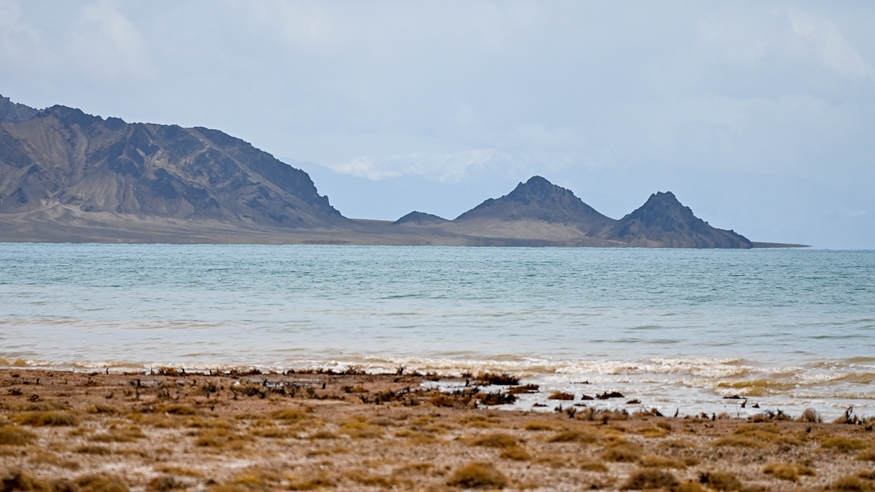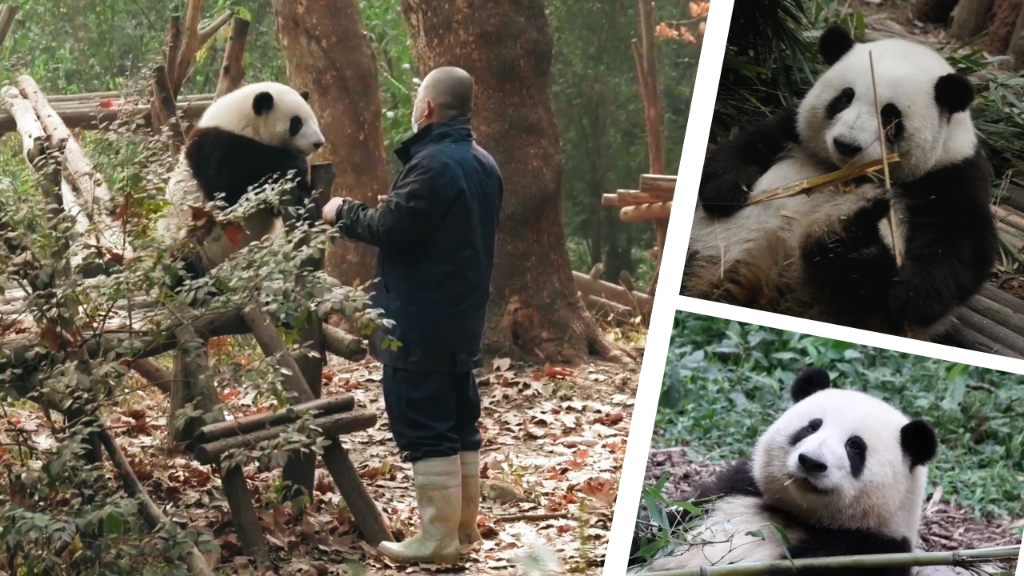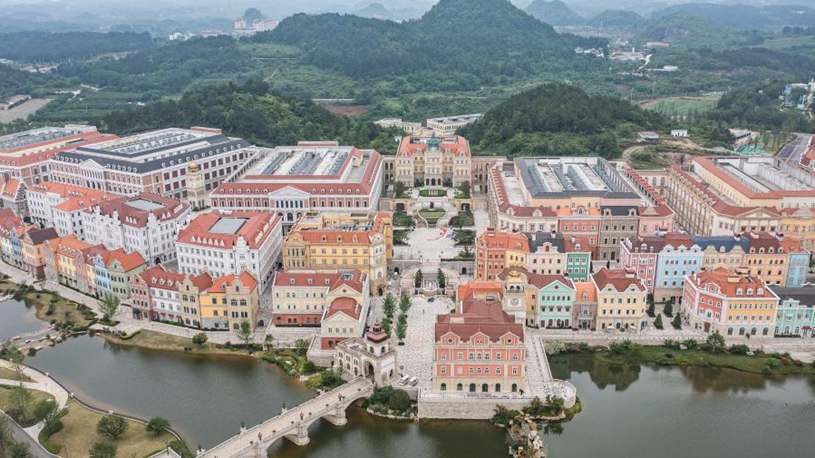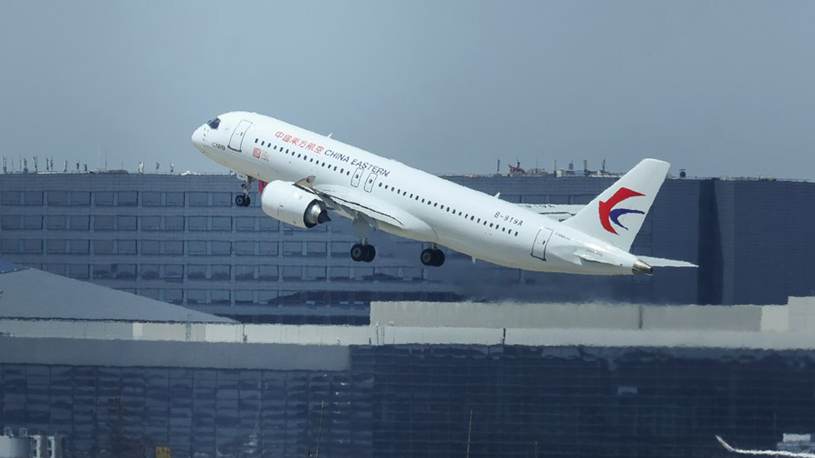NGARI, May 30 (Xinhua) -- Hidden among sandstone hills in remote western Tibet, a stretch of honeycomb-shaped caverns is way beyond the reach of most travelers.
Known as the Donggar and Piyang grottoes, the 1,000-year-old caverns in the Tibet Autonomous Region's Ngari Prefecture hold one of the world's greatest collections of Tibetan Buddhist murals.
Rigzin Wangzhab, 75, has been guarding the site for more than 20 years.
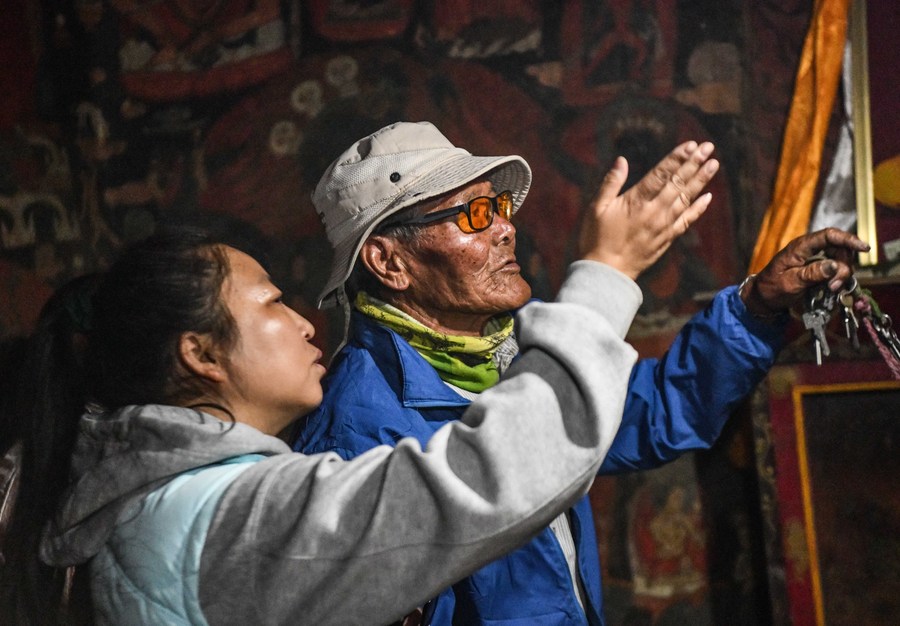
Rigzin Wangzhab, who has been guarding the Donggar and Piyang grottoes for more than 20 years, explains to a tourist as they look at the mural in a grotto in Zanda County of Ngari Prefecture, southwest China's Tibet Autonomous Region, May 26, 2023. Known as the Donggar and Piyang grottoes, the 1,000-year-old caverns in the Tibet Autonomous Region's Ngari Prefecture hold one of the world's greatest collections of Tibetan Buddhist murals. Frescoes that are currently open to the public mainly depict Buddhas, Bodhisattvas and other deities, but also feature animals that are not native to Ngari. (Xinhua/Jigme Dorje)
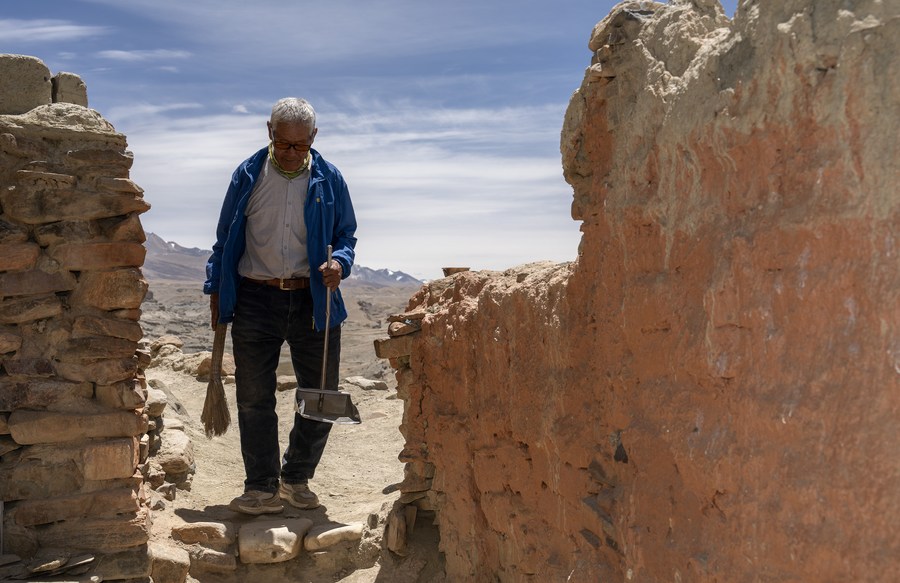
Rigzin Wangzhab prepares to clean a grotto in Zanda County of Ngari Prefecture, southwest China's Tibet Autonomous Region, May 26, 2023. (Xinhua/Fei Maohua)
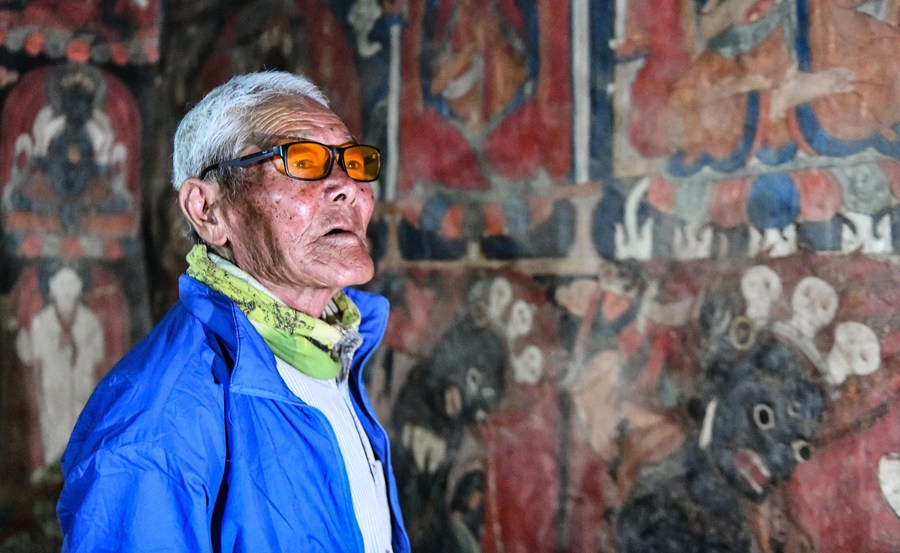
Rigzin Wangzhab views murals in a grotto in Zanda County of Ngari Prefecture, southwest China's Tibet Autonomous Region, May 26, 2023. (Xinhua/Jigme Dorje)
"When I was very young, I was told that the grottoes on the mountain were relics of high research value, so I had been thinking about doing something for them," Rigzin recalled.
It was in 2002 that Rigzin learned of a job opening for these cultural relics protection. He applied for the position, strongly believing that the job would be the best way for him to guard the relics.

Rigzin Wangzhab walks between grottoes in Zanda County of Ngari Prefecture, southwest China's Tibet Autonomous Region, May 26, 2023. (Xinhua/Fei Maohua)
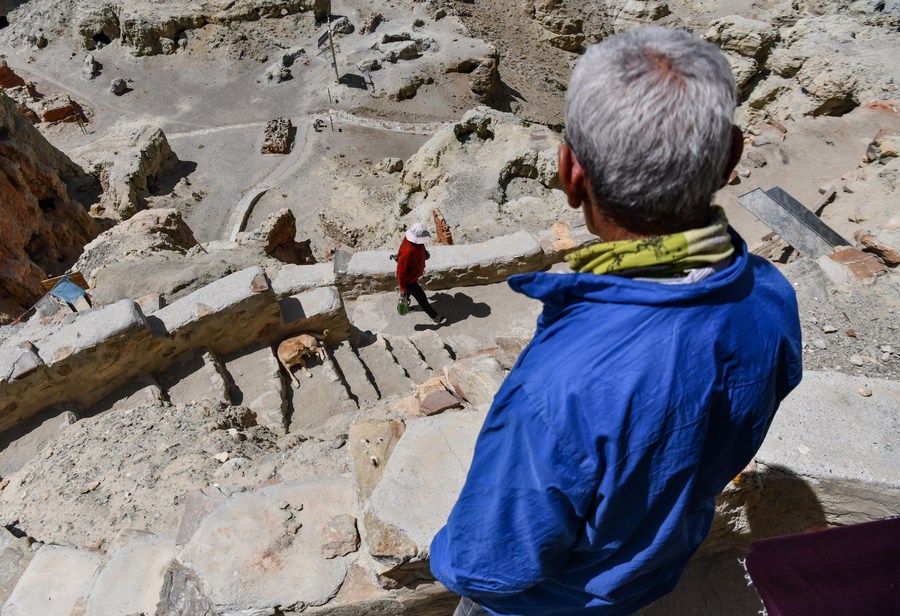
Rigzin Wangzhab looks on as his daughter-in-law brings a meal for him in Zanda County of Ngari Prefecture, southwest China's Tibet Autonomous Region, May 26, 2023. (Xinhua/Jigme Dorje)
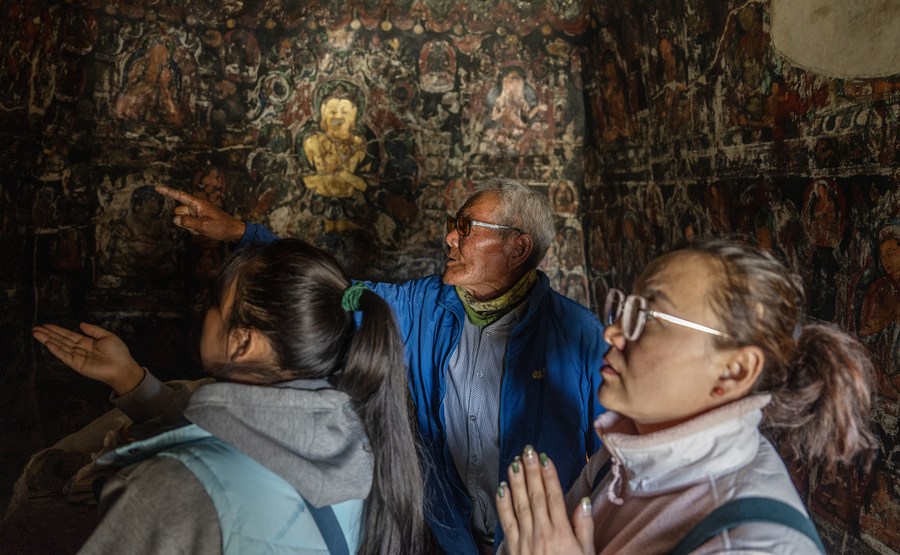
Rigzin Wangzhab (C) explains as tourists look at murals in a grotto in Zanda County of Ngari Prefecture, southwest China's Tibet Autonomous Region, May 26, 2023.(Xinhua/Fei Maohua)
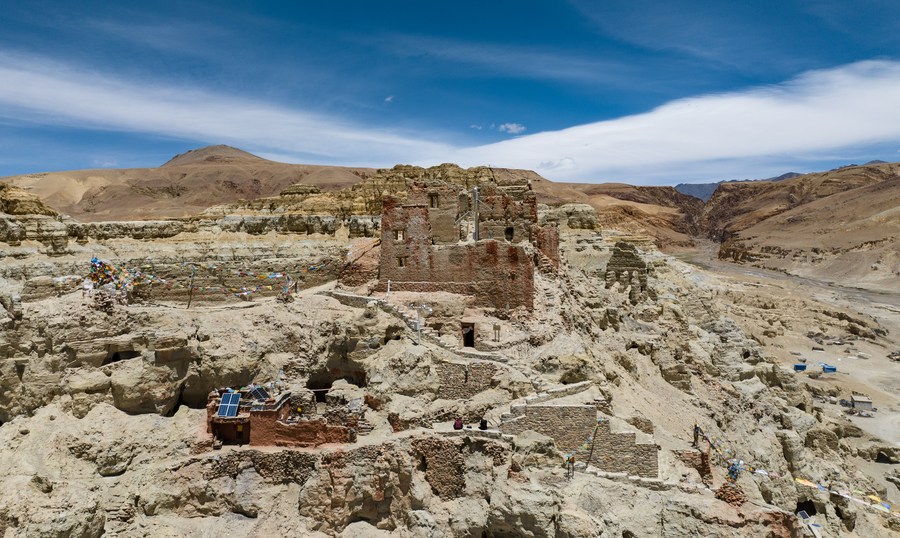
This aerial photo taken on May 26, 2023 shows the Piyang grottoes in Zanda County of Ngari Prefecture, southwest China's Tibet Autonomous Region.
(Xinhua/Jigme Dorje)
Buddhist murals have been previously found in north China's Shanxi Province and in the desert city of Dunhuang in northwest China's Gansu Province.
Experts say the discovery of the Donggar and Piyang grottoes provides a missing link for historians, allowing them to fully trace the origins of Buddhism in China. The murals depict substantial content, including exotic figures, animals, patterns, and designs.
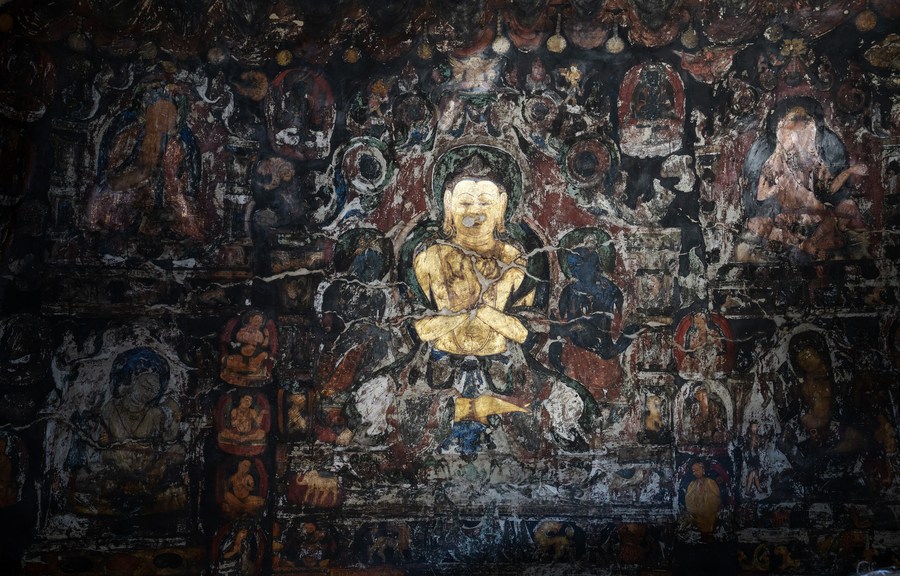
This photo taken on May 26, 2023 shows part of a mural in a grotto in Zanda County of Ngari Prefecture, southwest China's Tibet Autonomous Region. (Xinhua/Fei Maohua)
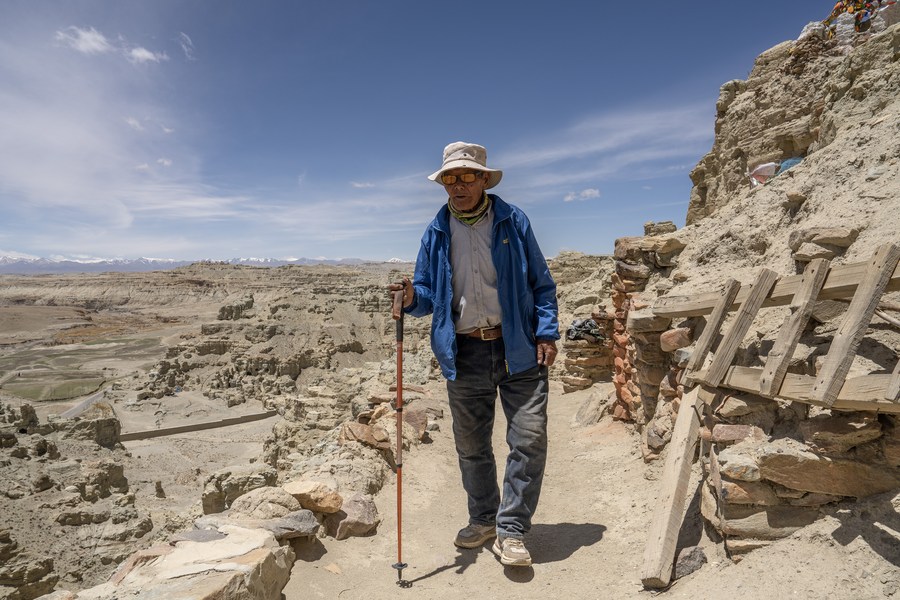
Rigzin Wangzhab walks between grottoes in Zanda County of Ngari Prefecture, southwest China's Tibet Autonomous Region, May 26, 2023. (Xinhua/Fei Maohua)
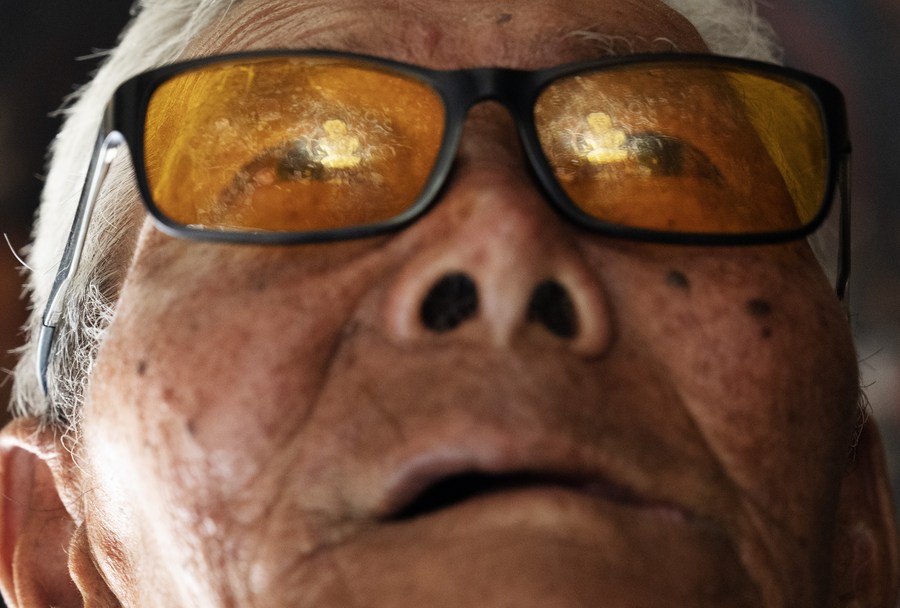
Rigzin Wangzhab views murals in a grotto in Zanda County of Ngari Prefecture, southwest China's Tibet Autonomous Region, May 26, 2023. (Xinhua/Fei Maohua)
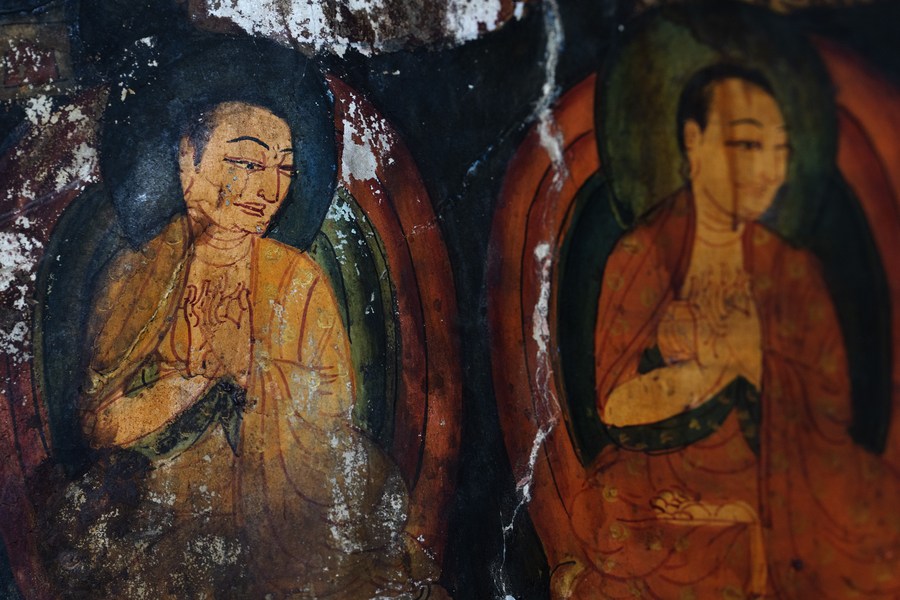
This photo taken on May 26, 2023 shows part of a mural in a grotto in Zanda County of Ngari Prefecture, southwest China's Tibet Autonomous Region. (Xinhua/Fei Maohua)
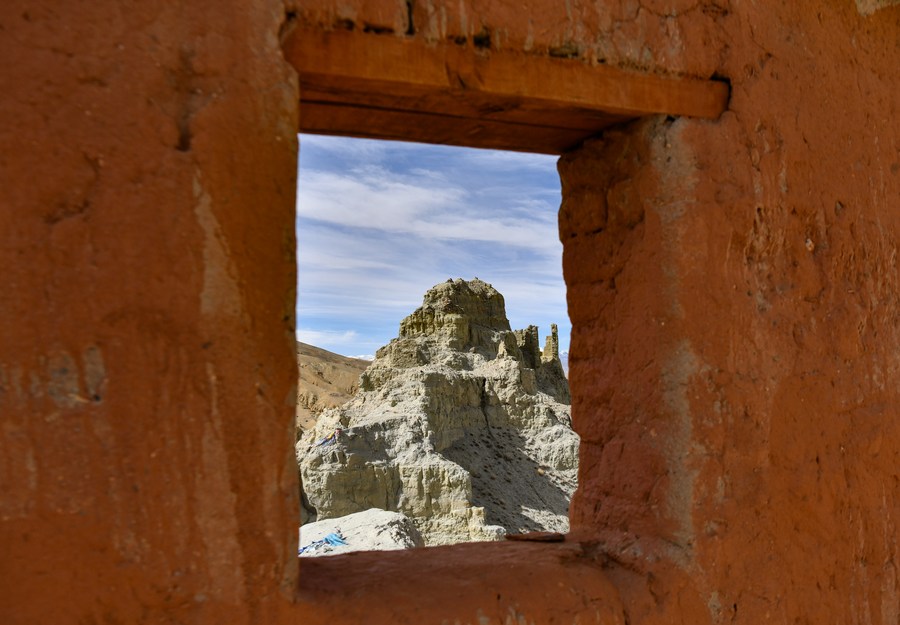
This photo taken on May 26, 2023 shows part of the Piyang grottoes in Zanda County of Ngari Prefecture, southwest China's Tibet Autonomous Region. (Xinhua/Jigme Dorje)
In addition to giving free lectures to tourists, Rigzin inspects the grottoes every day in case of water seepage or collapse.
"These murals and grottoes represent our history and culture. I will continue protecting the cultural relics so that our future generations can still see them," he said.
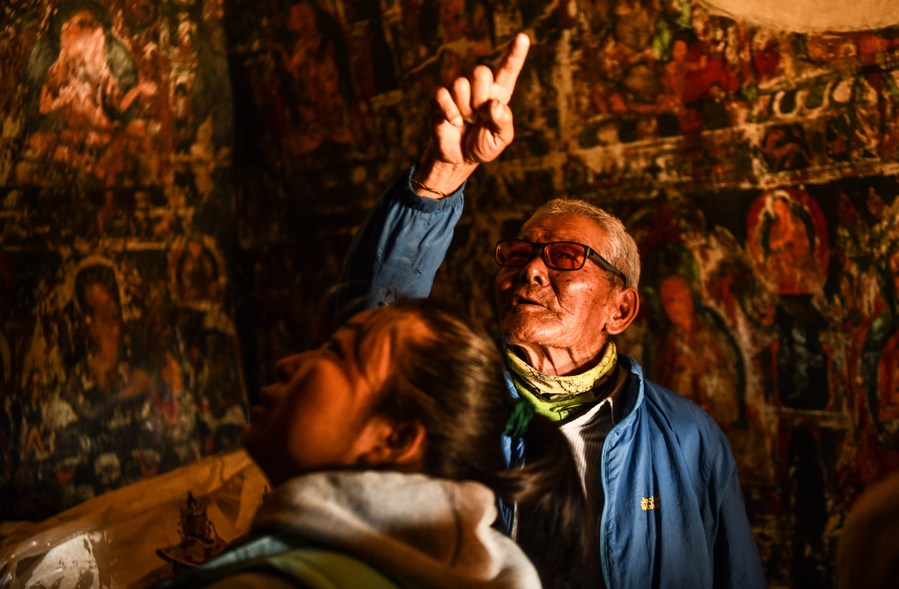
Rigzin Wangzhab explains as tourists look at murals in a grotto in Zanda County of Ngari Prefecture, southwest China's Tibet Autonomous Region, May 26, 2023.(Xinhua/Jigme Dorje)

Rigzin Wangzhab inspects a grotto in Zanda County of Ngari Prefecture, southwest China's Tibet Autonomous Region, May 26, 2023. (Xinhua/Jigme Dorje)
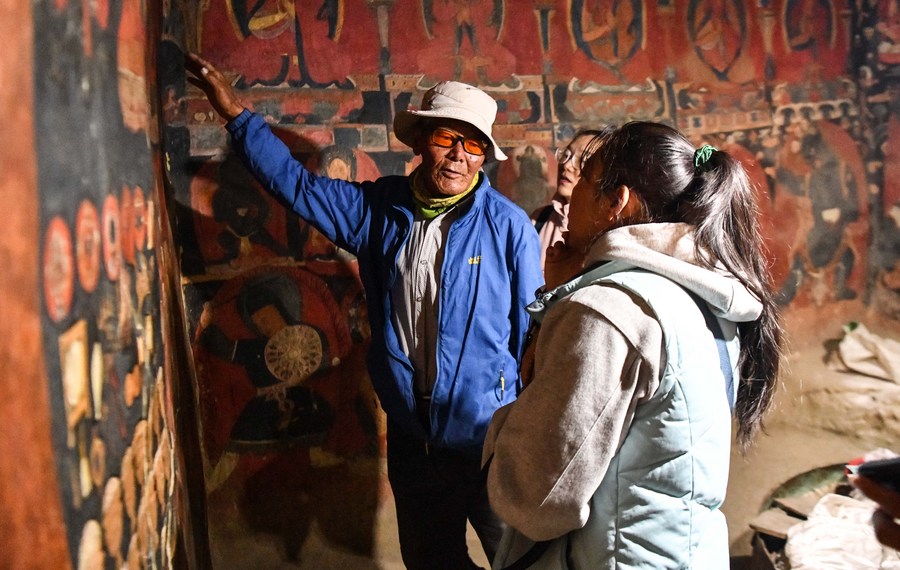
Rigzin Wangzhab explains as tourists look at murals in a grotto in Zanda County of Ngari Prefecture, southwest China's Tibet Autonomous Region, May 26, 2023.(Xinhua/Jigme Dorje)

A solar halo is pictured above the Piyang grottoes in Zanda County of Ngari Prefecture, southwest China's Tibet Autonomous Region, May 26, 2023. (Xinhua/Fei Maohua)
Produced by Xinhua Global Service■




